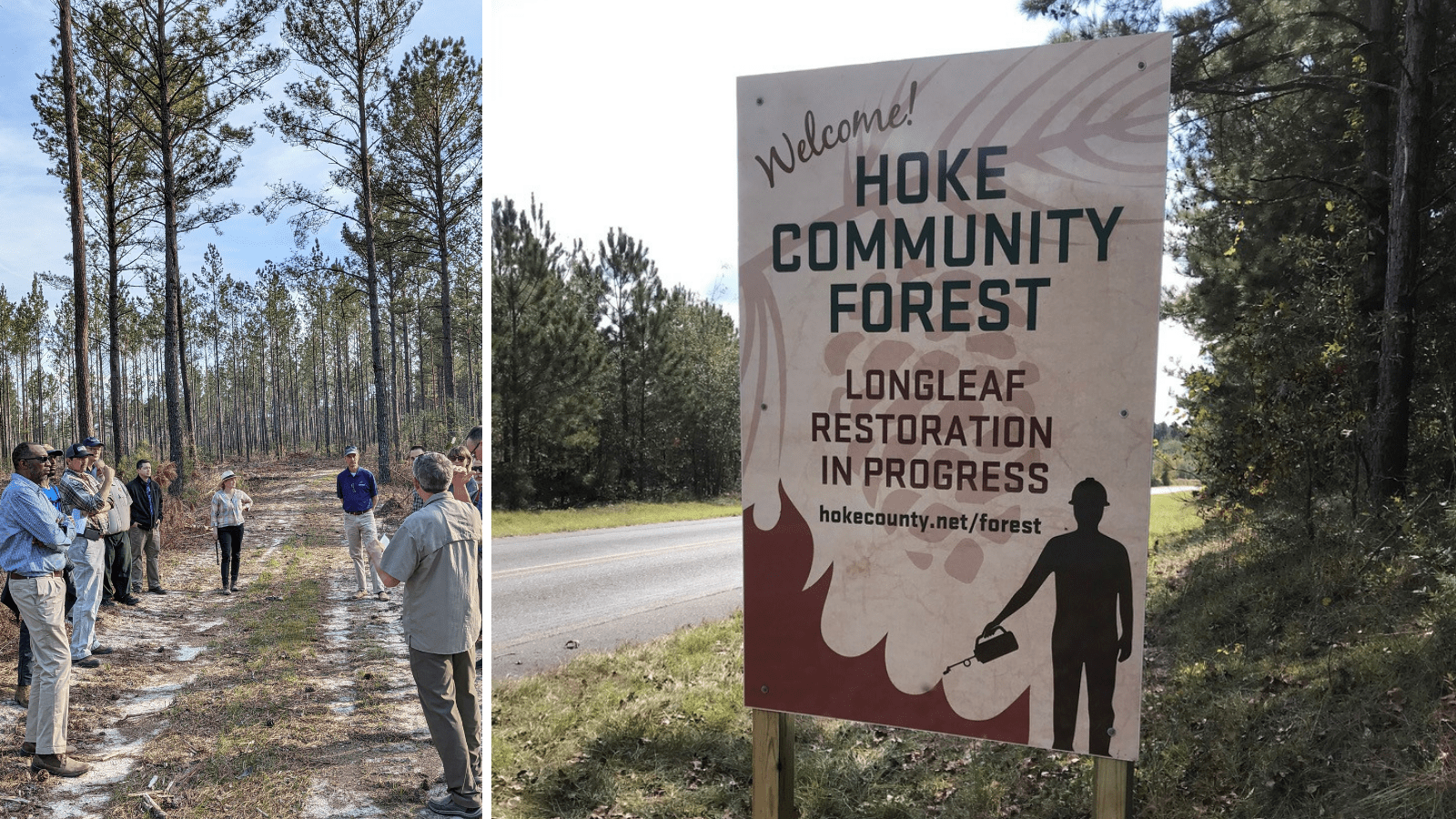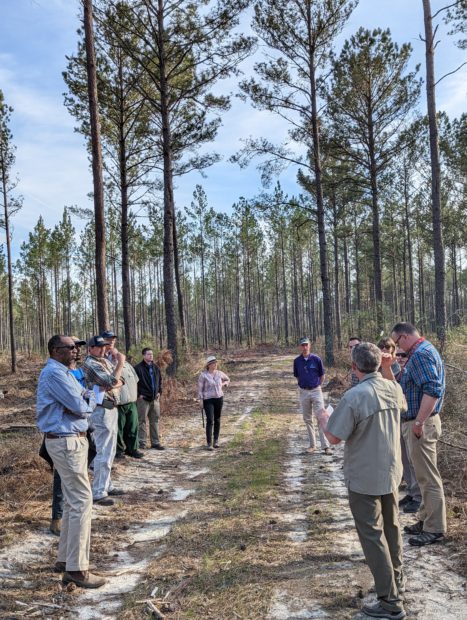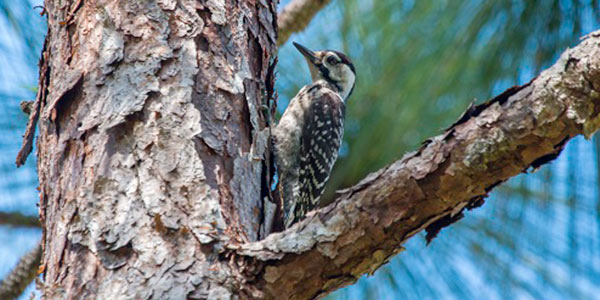We have much more to do and your continued support is needed now more than ever.
Restoring Forests, Reinforcing a Community
Turning A Community Forest into an Outdoor Haven and Revenue Generator in Hoke County, North Carolina

Located near the Sandhills and bustling military activity of Fort Bragg, the Hoke County Community Forest is on its way to becoming an outdoor recreation haven and revenue generator for a small, diverse county in North Carolina. The National Wildlife Federation is teaming up with Hoke County and other partners to begin work on a ground-breaking forestry project that will benefit wildlife, forests, and the citizens of Hoke County.
A community-owned forest
Hoke County is a minority-majority county and is home to one of few community-owned forests in the Southeast. The restoration of this 532-acre forest is generating income for this historically underserved county, and will eventually provide an outdoor classroom and recreational area for Hoke citizens.
Economic challenges have faced many N.C. rural counties and districts over the decades, however, the economic potential of the forestry and recreation industry in this area is worthy of attention, as the wood products in these forest systems hold great economic value when managed sustainably.

Recognizing the potential value that can be generated from forests, Hoke County was gifted 532 acres in 2011 from The Conservation Fund, and a sustainable management forest management plan has recently been put into place. Prior to this plan, this property sat unused and idle, economically and ecologically underperforming for a decade due to a lack of resources needed to restore and utilize the forest.
This all is changing now, as the current board of County Commissioners and staff are teaming up with non-profit conservation groups, forestry and wildlife experts, and local landowner groups to break ground and begin a multi-year plan to breathe new life into the forest. This project is incredibly special, as it is a first-of-its-kind partnership of nonprofits, federal/state/local entities, and businesses on county-owned property.
This forest will also provide numerous benefits to wildlife (such as the federally endangered Red-Cockaded Woodpecker), contribute to clean air and water in the area, aid military readiness by serving as a protected property near the Ft. Bragg base, and will serve as a model for other local communities.
The restoration process
The National Wildlife Federation has secured funds to begin restoration activities including wiregrass and wildflower plantings, controlled burns to reduce wildfire risks and reduce competing vegetation, plantings of native longleaf pine seedlings (a native and highly valuable ecosystem of the Southeast), and other crucial activities identified in the management plan.
Before these restoration activities can begin, a crucial thinning and cutting of less-desirable trees is needed to make space to replant the iconic longleaf pine. The National Wildlife Federation is working with a local forestry consulting group that is overseeing a timber harvest on a small section of the forest. The Longleaf Alliance is also joining the team to advise on understory restoration throughout the process. The proceeds from this initial thinning directly benefit the citizens of Hoke County.

This thinning is part of a detailed ten-year forest management plan with sustainability, wildlife, and conservation as the main objectives. What this means for Hoke County is that there is opportunity for continued and planned income from these forests over time, with commitments from the National Wildlife Federation and partners to restore and replant native forests as necessary thinnings occur.
In order to plant longleaf pine forests—the most biodiverse and valuable ecosystem known in the Southeast—it is crucial to selectively remove less-desirable trees first, a common practice in sustainable and conservation-based forestry. Furthermore, the entire property is protected in perpetuity through two easements, meaning that this forest has permanent conservation protection, and all practices will abide by the high standards respective to each easement.

The National Wildlife Federation’s Southeast Director of Forestry, Tiffany Woods, and forestry consultant, Luther Jones, are continuing to raise funds to support this multi-year project. A team of partners is also organizing to support the project including the Sandhills Prescribed Burn Association, The Nature Conservancy, The Longleaf Alliance, and many others.
Hoke County Commissioners and staff will work alongside this team of partners to ensure that the best interests of Hoke County citizens are represented and met throughout the process, as outdoor recreational and educational opportunities are built alongside economic and community wealth.
Funding for these activities is provided by the USDA’s Natural Resources Conservation Service (NRCS) of North Carolina and a grant from the National Fish and Wildlife Foundation’s Longleaf Landscape Stewardship Fund, which includes funding from Altria Group, the U.S. Department of Defense, USDA’s NRCS, U.S. Fish and Wildlife Service, and U.S. Forest Service.
The views and conclusions contained in this document are those of the authors and should not be interpreted as representing the opinions or policies of the U.S. Government or the National Fish and Wildlife Foundation and its funding sources. Mention of trade names or commercial products does not constitute their endorsement by the U.S. Government, or the National Fish and Wildlife Foundation or its funding sources.























